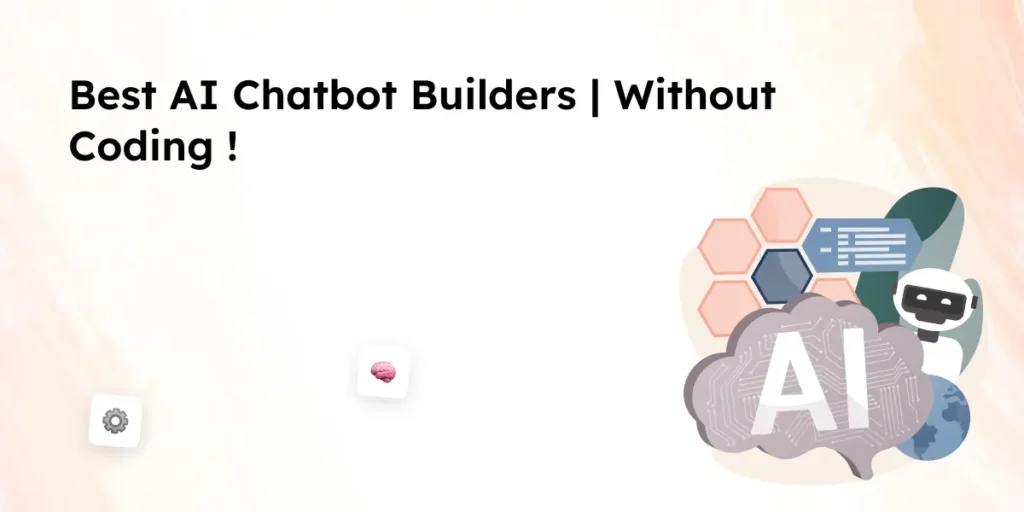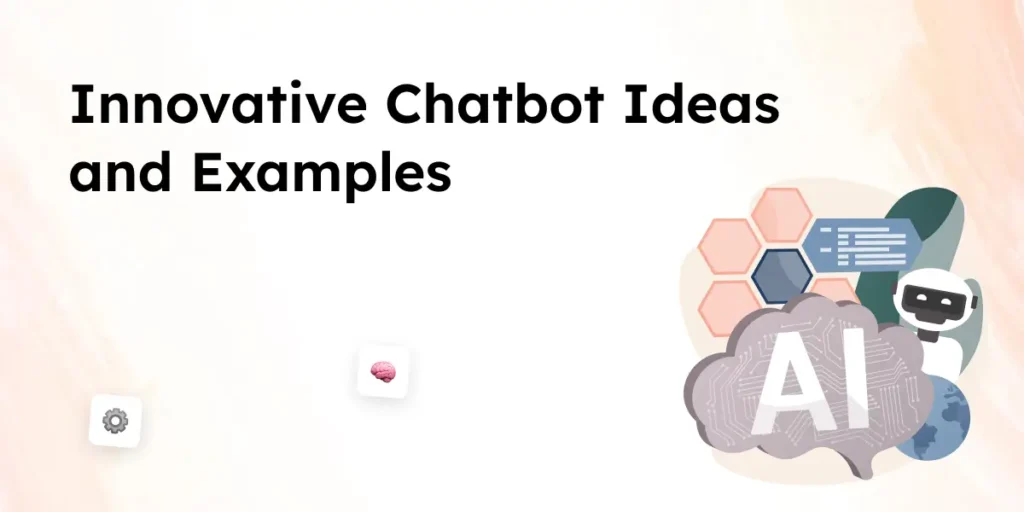Businesses are using chatbots to automate customer interactions, enhance user experience, and improve customer support. A successful chatbot strategy ensures seamless chatbot automation and effective integration with existing systems. However, chatbot development can fail without proper planning. An AI-powered chatbot must align with business needs, provide appropriate responses, and support communication channels.
This guide covers a structured chatbot implementation strategy to deploy a chatbot effectively. Whether it’s a rule-based chatbot or AI assistant powered by generative AI technologies, planning chatbot implementations properly ensures your chatbot performs well. By following these steps, businesses can improve chatbot usage, train an AI assistant, and enhance customer interactions through AI solutions.
8 Steps for a Winning Chatbot Implementation Strategy
Step 1: Define Business Needs & Goals for Your AI Chatbot
Before starting chatbot development, businesses need to define their goals and align chatbot automation with customer expectations. A chatbot solution should address specific business needs, whether it’s reducing response times, automating repetitive tasks, or improving user interactions. The right chatbot must fit seamlessly into the customer journey and communication channels to enhance customer experience.
Key considerations when defining business needs:
- Identify the chatbot’s purpose – Common chatbot use cases include order tracking, troubleshooting, lead generation, and customer support.
- Choose the right chatbot – Rule-based chatbots follow predefined paths, while AI chatbots powered by large language models and natural language processing handle complex queries.
- Ensure system integration – A chatbot tool should work smoothly with CRM platforms, websites, and social media like Facebook Messenger.
- Prioritize data security – AI customer service should protect customer data while maintaining high accuracy in responses.
- Track chatbot performance – Businesses need to analyze chatbot usage metrics to refine responses and improve AI chatbot strategies.
By setting clear goals for chatbot implementation, businesses can develop a chatbot that improves website engagement, enhances AI solutions, and optimizes customer interactions.
Step 2: Choose the Right Chatbot for Your Use Case
Not all chatbots are built the same, and selecting the right chatbot for your business needs is crucial for a successful chatbot strategy. The chatbot platform and chatbot technologies must align with customer interactions and support teams.
Factors to consider when selecting a chatbot:
- Type of chatbot – Businesses must choose between a rule-based chatbot, AI chatbot, or generative AI chatbot based on the complexity of customer queries.
- Use case alignment – A chatbot that’s designed for FAQ automation may not work well for lead generation or AI-powered troubleshooting.
- Integration requirements – The chatbot must integrate with CRM systems, knowledge bases, and customer support platforms for smooth functionality.
- Scalability – A chatbot solution should grow with business needs, supporting an increasing number of user interactions.
- Conversational capabilities – A successful chatbot must provide appropriate responses and adapt to evolving customer expectations.
Choosing the right chatbot ensures your chatbot performs efficiently and contributes to AI customer service improvements.
Step 3: Build a Knowledge Base for Your Chatbot
A chatbot’s effectiveness depends on its ability to access and use a well-structured knowledge base. AI chatbots rely on high-quality content to generate relevant and conversational responses.
Steps to build a strong knowledge base:
- Organize existing help articles – Structure content logically so chatbots and AI models can retrieve accurate information.
- Train an AI chatbot – Use datasets to ensure your chatbot understands customer inquiries and provides appropriate responses.
- Update the chatbot regularly – AI-powered chatbots improve over time by refining responses based on user interactions.
- Ensure data security – Protect customer data while maintaining accuracy in chatbot responses.
A well-maintained knowledge base enhances chatbot automation and ensures a positive user experience.
Step 4: Design an Effective Chatbot Conversation Flow
The way a chatbot interacts with users affects customer engagement and satisfaction. A well-designed conversation flow ensures smooth and effective chatbot interactions.
Tips for creating an effective conversation flow:
- Understand customer expectations – Anticipate user needs and plan chatbot responses accordingly.
- Use natural language processing – AI chatbots with NLP capabilities can better interpret user inputs and provide relevant responses.
- Test the chatbot’s responses – Ensuring your chatbot understands different user queries helps improve chatbot automation.
- Optimize chatbot usage – Monitor how users interact with the chatbot to refine conversation flows and enhance user experience.
A strong chatbot conversation flow leads to better chatbot adoption and improved customer interactions.
Step 5: Prioritize Data Security & Compliance
Data security is essential when deploying AI-powered chatbots. Businesses must ensure their chatbot handles customer data responsibly while complying with industry regulations.
Best practices for chatbot data security:
- Encrypt sensitive data – Protect customer data from unauthorized access.
- Follow compliance guidelines – Adhere to GDPR, CCPA, and other industry standards.
- Monitor chatbot interactions – Identify security vulnerabilities through chatbot performance analysis.
- Ensure chatbot integration security – Secure chatbot connections with CRM and customer support platforms.
Securing chatbot interactions builds customer trust and protects business data.
Step 6: Test & Optimize Your AI Chatbot Before Launch
Before businesses deploy a chatbot, thorough testing is required to ensure chatbot performance and reliability.
Key areas to test before chatbot deployment:
- Conversation accuracy – Ensure your chatbot provides correct responses to customer queries.
- Chatbot’s integration – Verify seamless communication with other support tools.
- User experience – Evaluate chatbot interactions to ensure smooth and intuitive engagement.
- Generative AI optimization – Fine-tune large language models to enhance chatbot response accuracy.
Testing a chatbot before launch minimizes errors and improves customer support.
Step 7: Deploy the Chatbot & Monitor Performance
After testing, businesses can launch their chatbot across communication channels while tracking chatbot usage metrics.
Steps to deploy your chatbot successfully:
- Launch your chatbot gradually – Start with a limited audience before full deployment.
- Monitor chatbot adoption – Track engagement and refine chatbot responses as needed.
- Evaluate chatbot automation success – Measure chatbot impact on customer interactions and support efficiency.
- Ensure human agent fallback – Provide an option for users to switch to a human agent if needed.
Monitoring chatbot performance ensures continuous improvements and user satisfaction. Choosing the right chatbot features is crucial for successful implementation.
Step 8: Continuously Improve Your Chatbot with AI & User Insights
A chatbot that’s deployed isn’t the final version. Businesses need to analyze chatbot usage and optimize it based on customer interactions.
Ways to improve chatbot performance over time:
- Analyze chatbot interactions – Identify patterns in user questions and refine chatbot responses.
- Update AI models – Train an AI chatbot with new datasets for better accuracy.
- Improve chatbot look and feel – Make the chatbot interface user-friendly.
- Enhance chatbot automation – Optimize AI bots to handle evolving customer needs.
Continuous improvements ensure a chatbot solution stays relevant and meets changing business needs.
FAQs
What is the best chatbot solution for small businesses?
The best chatbot solution depends on business needs and use cases. Rule-based chatbots are great for handling simple FAQs, while AI-powered chatbots with natural language processing can automate more complex customer interactions. A chatbot platform that offers seamless integration with existing systems is ideal for small businesses.
How does a knowledge base improve AI chatbot accuracy?
A chatbot’s accuracy depends on the quality of the knowledge base it references. A well-structured knowledge base ensures the chatbot understands user queries and provides relevant responses. Regularly updating chatbot datasets improves chatbot automation and enhances customer experience.
What are the key data security risks in chatbot implementation?
AI chatbots handle customer data, making data security a priority. Risks include data breaches, unauthorized access, and compliance violations. Businesses should implement encryption, follow industry regulations like GDPR, and monitor chatbot interactions to ensure secure AI customer service.
How do I measure the success of my AI chatbot strategy?
To track chatbot performance, businesses should monitor key chatbot usage metrics like resolution rates, customer satisfaction scores, and response accuracy. Analyzing chatbot interactions helps improve chatbot automation and optimize the chatbot’s conversational flow.
Conclusion
A successful chatbot strategy requires careful planning, the right chatbot technologies, and continuous optimization. By following the chatbot implementation strategy outlined in this guide, businesses can develop their chatbot to improve customer interactions and enhance AI customer service.
From defining business goals to integrating AI solutions, businesses need to ensure chatbot adoption aligns with customer expectations. AI-powered chatbots with natural language processing and large language models improve chatbot automation, while a structured knowledge base ensures chatbot accuracy.
Deploying and refining chatbots and AI systems help businesses improve website engagement, customer interactions, and overall user experience. A chatbot that’s continuously optimized provides better responses, increases efficiency, and enhances communication channels.
By implementing these steps, businesses can set up a chatbot that meets business needs, supports customer service teams, and improves AI chatbot performance over time.



